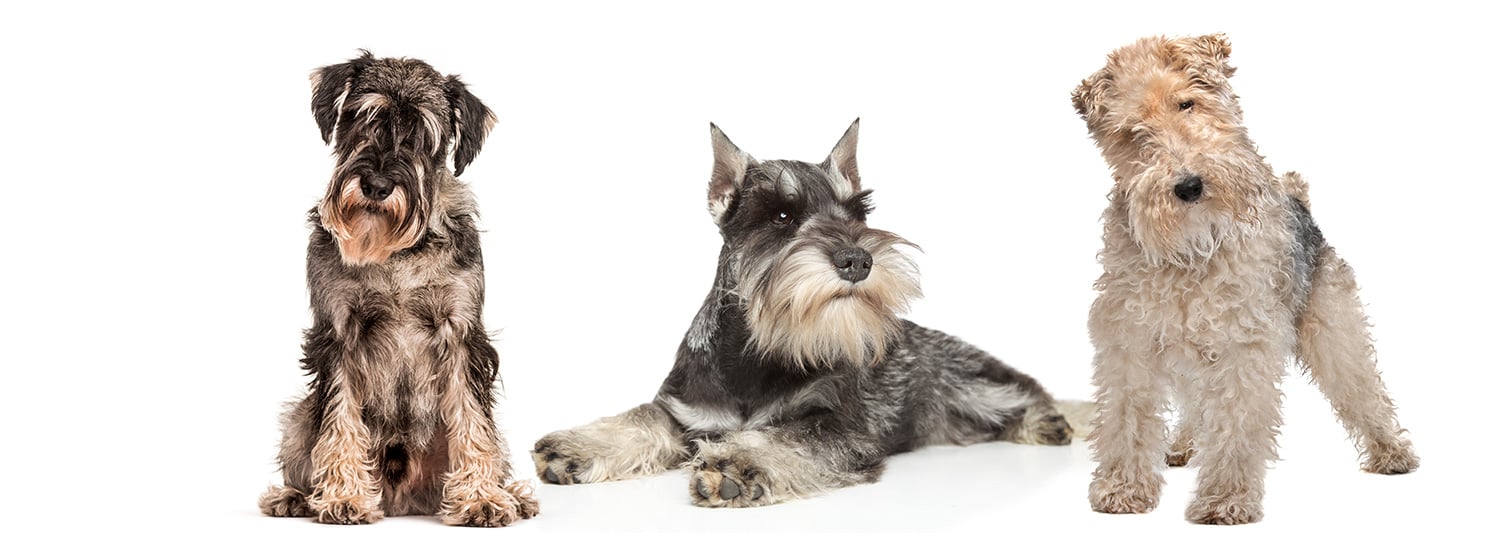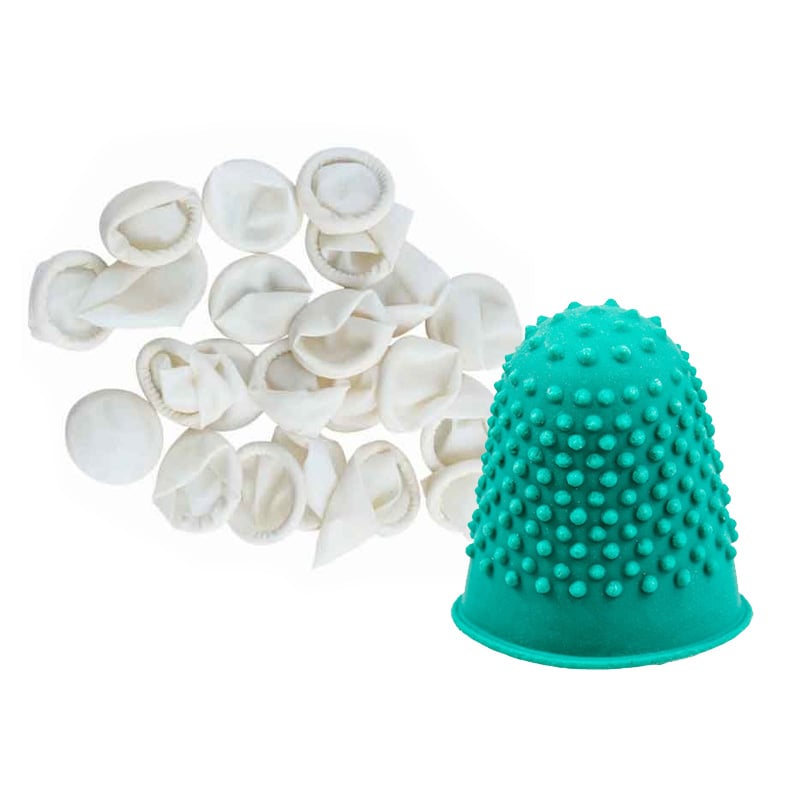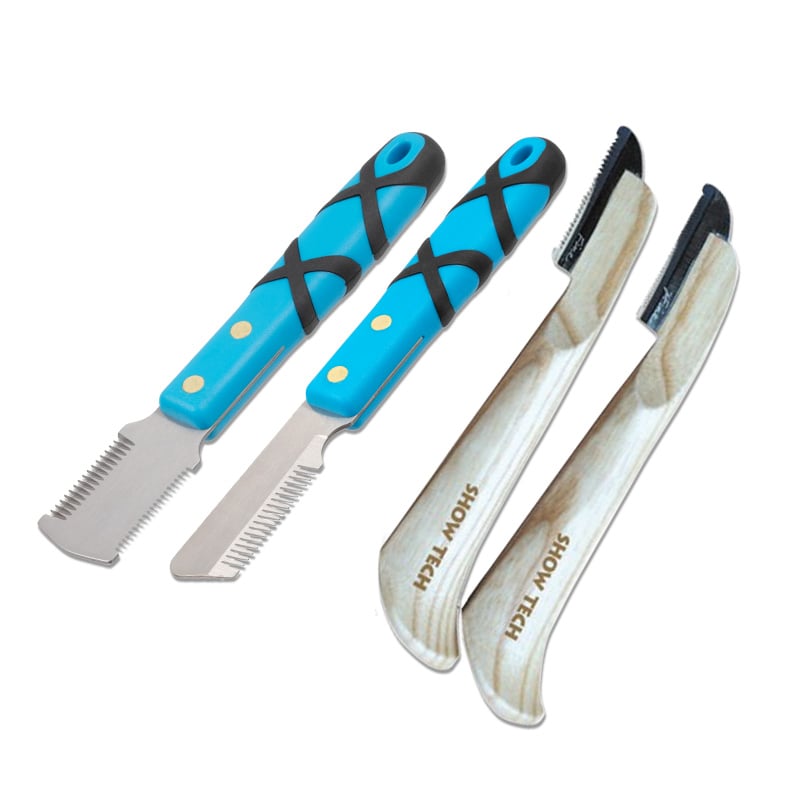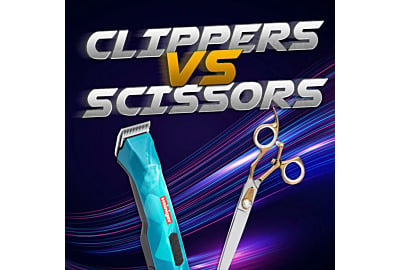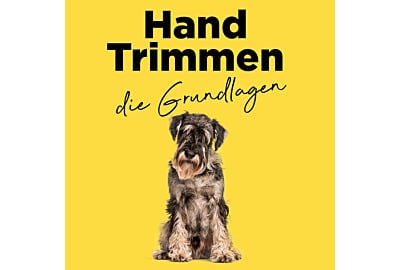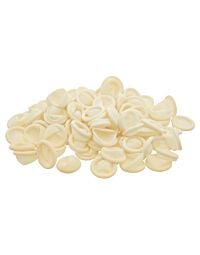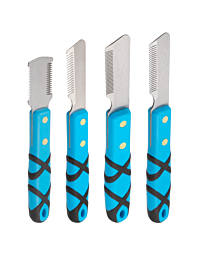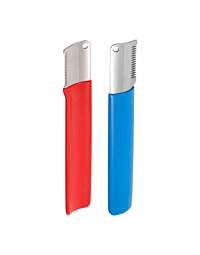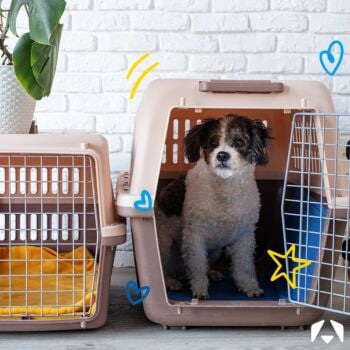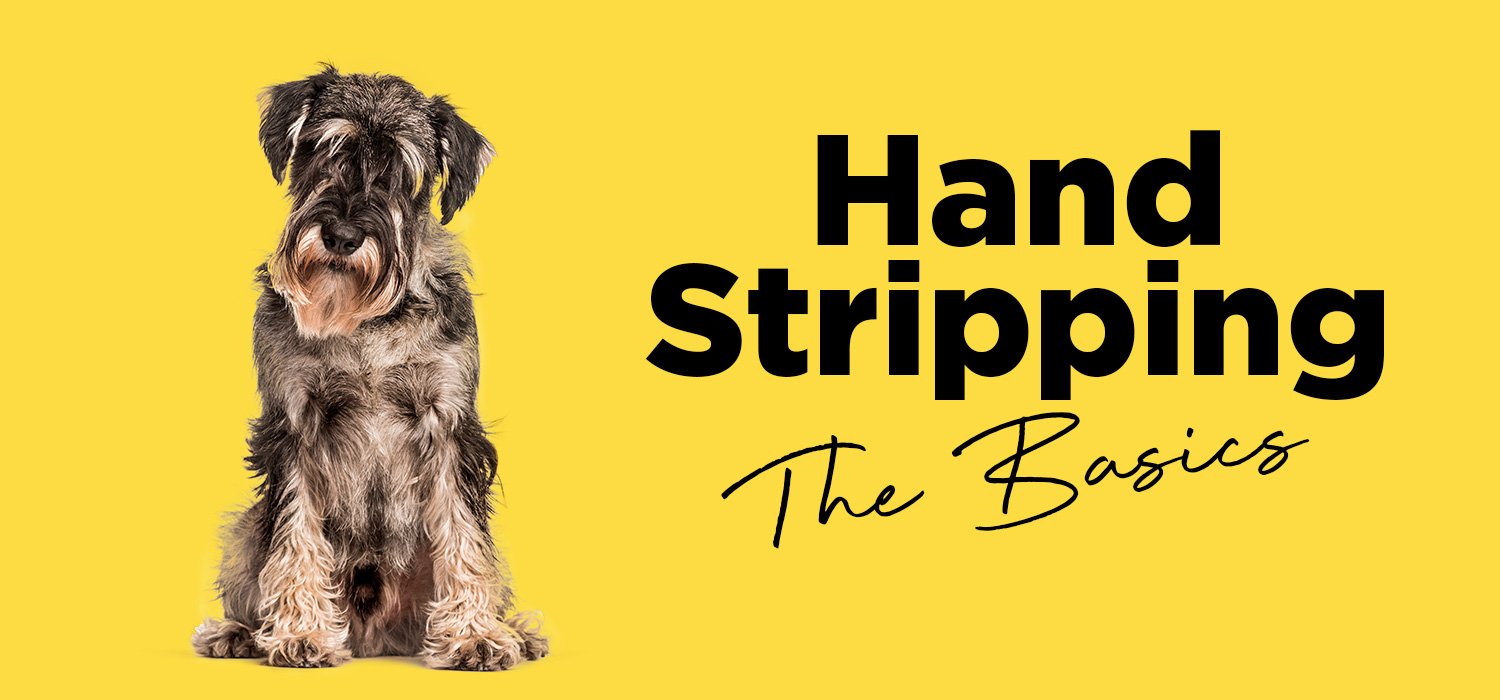
.jpg)
What is Hand stripping?
Hand stripping is the process of excess dead topcoat, without clipping, leaving room for the new coat to grow and giving a more natural look. It keeps the dog’s coat tidy and healthy, leaving it strong and shiny. It is done by plucking/pulling the hairs out in the direction of growth. If the coat is not manually removed, the hair follicle can become clogged and matted and this can lead to irritation for the dog or more advanced problems later.
Stripping the coat is generally divided into three sections with a transition area between the Jacket (C) and the Flats (A).

A dog’s hair follicle is made up of a thick guard hair and soft undercoat. The cycle of growth for hard, wiry coats has 4 stages.

So the dog’s coat will grow and only sheds when it reaches the maximum length. Hand stripping therefore naturally works alongside this cycle to remove the shedding hair making room for a new coat to grow. The Resting Phase is when hand stripping is best carried out as the hair follicle is easiest removed at this stage without causing pain to the dog.
What is carding? Not to be mistaken for hand stripping, carding is the process of removing dead undercoat, while hand stripping is removing the topcoat. Removing this undercoat should be done before clipping or scissoring and tools such as are great for this. After a full hand stripping, you should card the coat to remove any remaining lose hairs.
What breeds of dogs need hand stripped?
Hand stripping is more about the coat type than the breed. The texture of a dog’s coat can be affected by genetics, whether the dog has been spayed or neutered, the dog’s age, breed, and coat type. For example, neutering can result in the growth of a softer coat and although it may still be possible to hand strip, it might be worth considering moving to clipping.
It tends to be the wirier coats that need hand stripped, so terriers are often hand stripped as well as several Sporting, Hound and Toy breeds, that are hand stripped for the show ring.
Why should I hand strip instead of clipping?
The first thing to explain to your customer is what is best for their dog’s skin and coat; Hand stripping is the correct way to groom a wired coat breed. Hand stripping mimics how a dog’s coat would be maintained in the wild and will keep the proper breed look (something which is very difficult to imitate with clippers).
Hand stripping will:
- Maintain a healthy coat and skin on wired coat breeds by removing dead hair which in turn stops follicles becoming clogged and irritated.
- Maintain the gorgeous rich colour of the dog’s coat.
- Ensure the dog’s coat still offers protection. The new guard coat will repel dirt and dust and will also have waterproof properties.
Clipping will:
- Change the coat texture and volume – Clipping will often leave the dog’s coat soft and fluffy. It won’t be waterproof, and it will also need washed more frequently. A straight coat after clipping can also become curly or wavy and may matt more easily. You may notice the coat gets lesser as the skin stops following the cycle to produce and push through new hair follicles.
- Change the coat colour - colour will be duller and lighter
What tools do I need?
- Make sure you don’t touch the skin with the knife.
- You won’t need to pull too hard as the lose hair will come away.
- Chose a knife with a comfortable handle to help reduce wrist and hand strain
- Make sure the blade is not sharp enough to cut the hair. to check the blade examine the hairs you've taken out and if they are of different lengths and have roots then you knife is dull enough.
- The stripping stones are like smooth pumice stones
- These are great for newer groomers and allow them to learn to pull the hair without bending their wrist or breaking the coat.
- To use grip the hair between the stone and your fingers.
Finger Condoms and grips These will improve your ability to grip the hair on the dog and remove it.
Stripping Powder & Chalk Using grooming chalk/powder provides more grip to the hair when hand stripping.
Tips and Advice
- Start with the top line from head to the base of the tail – pull the hair out using your finger and thumb as that is the area most likely to get breakage if stripped with a knife.
- If you are stripping a silky coat breed you can instead focus on plucking with your finger and thumb and using the likes of , , or .
- Do small sections at a time and keep skin taut - this will allow the dead coat will be removed easily.
- Always strip with the direction of the growth as the hair will grow back in that direction.
- Hand stripping should not be painful if done properly as the hair being removed is dead and loose.
- It is easier to hand strip if the coat is not clean. If the owner wants the dog washed, consider doing this after stripping or on another day.
- Stripping will take longer than clipping so remember to charge your customers accordingly and make sure enough time is reserved for each hand stripping appointment so you can get an excellent finish.
- If a dog really hates being hand stripped, then be honest with the owner and let them know it might be kinder to clip the dog.
- If a pet owner requests their hand stripped dog to be clipped, make sure they are aware this will permanently change the texture of the coat and it may not be possible to hand strip the dog after that.
- If the owner does not intend to show their dog you could consider scissoring round their pet’s feet or groin if they are sensitive in those areas during hand stripping.
- After hand stripping finish the groom with a spritz of or and brush through.

